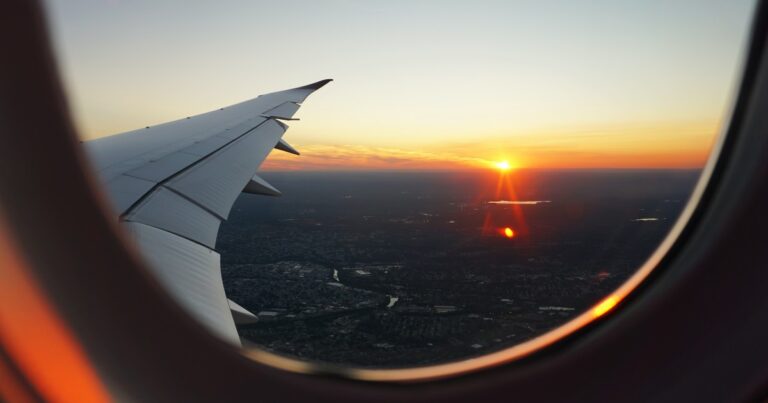The 2023 Global Muslim Travel Index, released earlier this year, predicts that 230 million Muslim travelers worldwide will spend US$225 billion annually by 2028.
In early June, Malaysian and Indonesian media each claimed their countries the title of “the world’s most Muslim-friendly destination.” The timing coincides with the release of his 2023 Mastercard-CrescentRating Global Muslim Travel Index, which evaluates 138 countries across key aspects of the travel experience for Muslim tourists. This year, Malaysia and Indonesia, neighboring Muslim-majority countries in Southeast Asia, tied for first place.

Temples on the Indonesian island of Bali are one of the top destinations for Muslim travelers.Image: Mahmoud Ahsan on Unsplash
The regional rivalry between Malaysia and Indonesia highlights the growing prominence of Muslim tourism and the competition to attract travelers whose travel plans fit specific faith-oriented criteria. Globally, the Muslim travel market has experienced a strong recovery following the pandemic. “In 2022, there were 110 million Muslim travelers, accounting for 12% of international arrivals,” says the Singapore-based Global Muslim Travel Index and various thematic leaders. says Fazal Baharuddin, founder and CEO of Crescent Ratings, which publishes halal travel reports.
As pandemic travel restrictions recede, the 110 Muslim travelers in 2022 accounted for 68% of total travelers in 2019. “This has been a really strong recovery,” Baharuddin said. “Our forecast for 2023 is 140 million, with a full recovery to 2019 levels of 160 million in 2025.”
Further dynamic growth is expected in the second half of the 2010s. “Our projections are that Muslim visitor numbers will reach 230 million by 2028, with estimated spending of $225 billion,” he says. “This highlights the economic importance of Muslim travel and its potential to contribute to the recovery and growth of the global travel industry.”
Measuring changes in halal travel
Measuring and comparing developments across the travel chain is essential to supporting meaningful growth of the tourism industry. It also helps Muslim travel consumers make informed choices, says Baharuddin. He highlights emerging trends and patterns in consumer behavior, in addition to providing destinations with competitive benchmarks to improve their own tourism offerings.
The expansion of the annual Global Muslim Travel Index, jointly published by Crescent Ratings, a global consulting and certification company for halal-friendly travel, and Mastercard, reflects the growth and diversification of halal travel in recent years.

Malaysia (pictured) and Indonesia often compete for top destinations for Muslim travelers. Photo by his Esmonde Yong on Unsplash
Baharuddin came up with the idea in 2011. The first report analyzed the top 10 destinations for Muslim tourists. The 2023, 82-page Global Muslim Travel Index evaluates his 138 countries across all continents across his four key aspects of the travel experience.
Ease of access from the top 30 Muslim travel outbound markets including visas and transportation infrastructure Destination marketing and communications Environment incorporating climate, safety and sustainability Services, attractions and experiences.
This year, Indonesia and Malaysia, long known as popular destinations for Muslim tourists, shared the top spot. Saudi Arabia, UAE and Turkiye occupied the top five positions, while Qatar, Iran, Jordan, Bahrain and Egypt occupied the top ten.
Perhaps unsurprisingly, countries from Asia, the Middle East, and North Africa dominate the top 20. The UK is jointly the highest ranked country in 20th place outside of these three regions. Germany and Spain are tied for 36th place, Australia and the United States are tied for 40th place, and New Zealand is ranked her 60th place.
Three “billion person markets”
Destinations and travel companies in the Asia-Pacific region are carefully assessing trends in three large markets as travel patterns further evolve following the disruption caused by COVID-19. “There are three ‘billion person markets,'” Baharuddin says. Each of these will help shape the future of travel. India and China both have populations of over 1.4 billion. The Muslim population is much larger, currently around 2 billion people, making up about 25% of the world’s population, although they are dispersed across borders and continents.

Demand for travel has increased since COVID-19, with Muslim travelers accounting for a valuable portion of the tourist numbers for intra-Asia travel. Photo by Isabel Lee on Unsplash
This poses a psychological challenge for the travel industry. Tourism boards and service providers have historically targeted promotions to consumers in specific country markets. This strategy does not apply to Muslim travel. However, the long-term and devastating effects of the pandemic are forcing travel marketers to stretch their budgets and diversify their inbound mix.
Asia is a global hub for Muslim tourism. In 2022, 31% of all travelers to the region identify as Muslim. “There is a strong trend in intra-Asia travel towards short-haul regional travel, and destinations are responding to this,” says Baharuddin.
Some destinations in Asia are now paying more attention to Muslim tourists, perhaps because they have been closed for so long, Baharuddin said. “Southeast Asia is generally Muslim-friendly due to its demographics, with more than 40% of people in the region being Muslim. Beyond that, places like Taiwan and Hong Kong have remained Muslim-friendly during the pandemic. “We continued to talk about attracting markets.” However, he believes that Middle Eastern countries and Turkiye have “made greater progress” than Asian countries.
communication is key
Outside of key Muslim-friendly markets, CrescentRating has recently developed halal tourism guides and information resources for cities such as New York and Malaga, and is working on a strategic project with Uzbekistan’s national tourism agency.
Opportunities exist in Australia and New Zealand, which are seen as ambitious and adventurous destinations for Muslim travelers. Both Tourism New Zealand and Tourism Australia have halal tourism sections on their websites.
“Australia and New Zealand have been developing halal travel ecosystems for several years, but they have not yet communicated their services internationally to the same extent as places like Taiwan or Hong Kong,” says Baharuddin.
Part II of this article covers emerging trends in halal travel, including gourmet tourism, cultural experiences, and the influential role of women travelers.
– Asia Media Center

